May 27th, 2007
 Â
Â
Cuz’in Peter, who currently works at Yahoo! but is more a zseni Houyhnhnm, pointed me to Websites as Graphs, resulting in the pictures of this blog above. As time elapses, the picture develops more detail. There is even a Flickr site (tagged websitesasgraphs) to post your results. The technology and source used is posted on the site. Below is a comparison of Yahoo!’s and Google’s homepages (not fair, really, since Yahoo! is a portal and Google a search engine). My little blog is more complex than either (but if you want to see complexity let it work on CNN for a while).
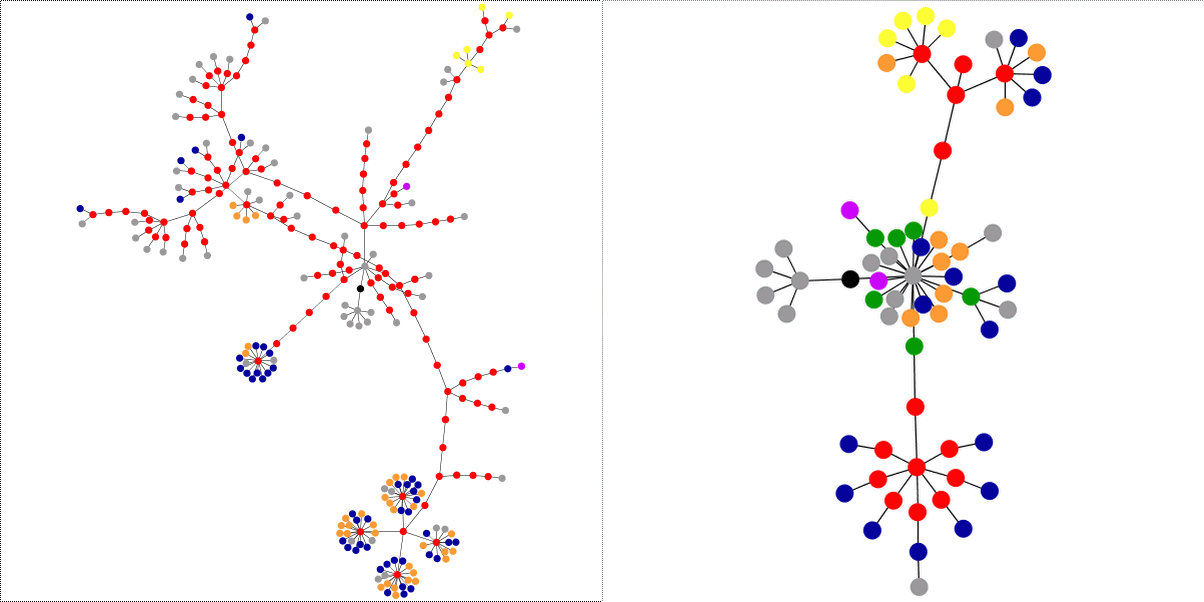
At first I thought this was a graph of network links. Wrong! It maps html syntax. Below is the key.
| tag(s) = |
color |
| html = |
black |
| table, tr, td = |
red |
| p, br, blockquote = |
orange |
| form, input, textarea, select, option = |
yellow |
| div = |
green |
| a = |
blue |
| img = |
violet |
| everything else = |
gray |
 I don’t know if Yahoo! is using this technology, but they do have some cool stuff® like the recent feature Pipes (a user’s guide). With it you can easily create mashups, like a combined Yahoo! & Google search, and much much more.
P.S. A post about about Aharef’s website was made exactly 1 year ago on Pharyngula.
P.P.S. Note: the applet shows the structure of a web page, not a web site – comments on Edward Tufte’s board.
P.P.P.S. Some more webpagegraphs: my employer’s homepage, my homepage, this article’s page.
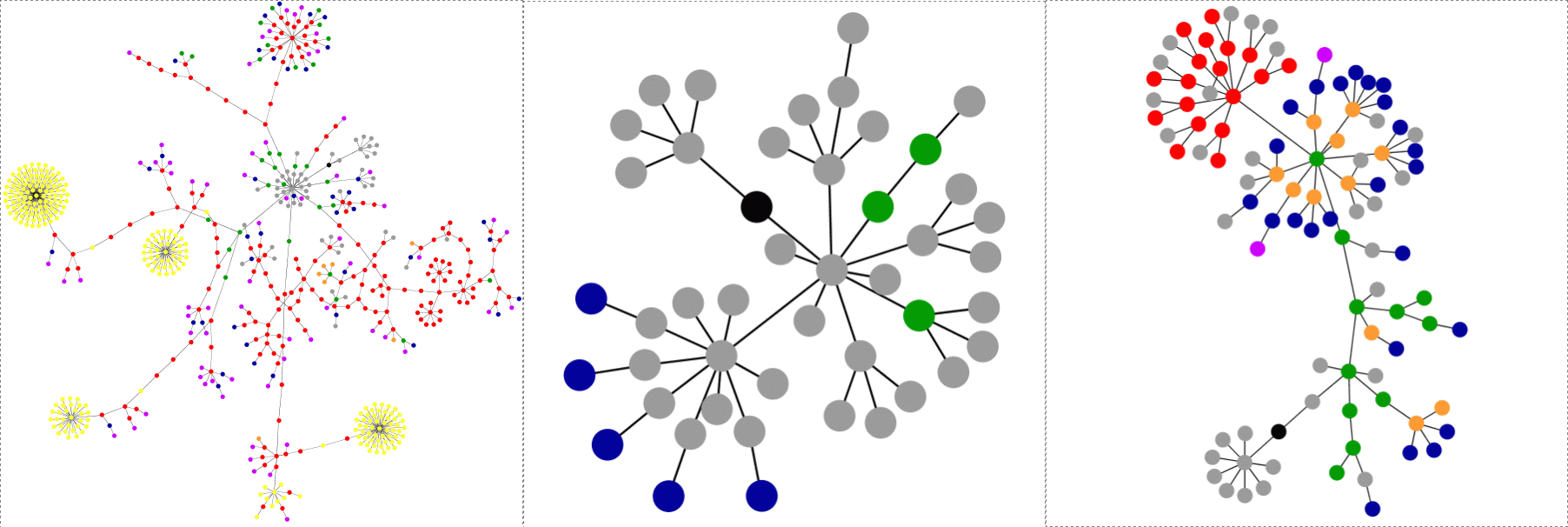
Posted in Computers & Technology, Family & Friends | 6 Comments »
May 3rd, 2007
 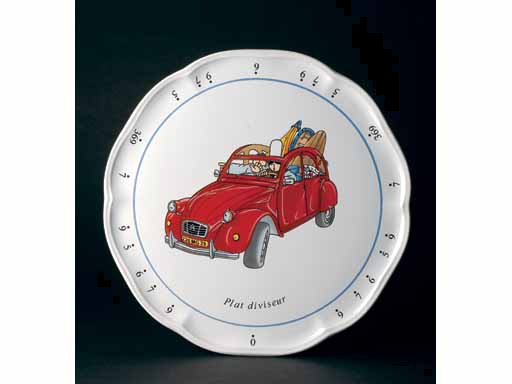
Web 2.0 is all about community. WetPaint introduced a service which makes creating Wikis a snap. It’s free (they provide the google ads). So I created a Wiki called Combinational Mathematics for the combinatorists and recreational math ethusiasts among you (the URL: http://cmath.wetpaint.com/ is simpler than the title). For starters there is a book list (7, including 2 online pdf books [1], [2]); a links list (9); and a list of other math Wikis (8).
I also used a web widget from OUseful Info‘s blog to create a “carousel” of similar books. It’s really simple. Just enter the URL: http://blogs.open.ac.uk/Maths/ajh59/similarCarousel.php?isbn=ISBN&size=3 , substituting the ISBN code, which can be found here or here.  The size is the width of the carousel.
In short, it is already a fun site! Check it out. And by all means don’t contribute . . . NOT! You can buy the beautiful French plates here. Go figure how it helps you slice a pie.
Posted in Books, Computers & Technology, Math & Science | 4 Comments »
April 23rd, 2007
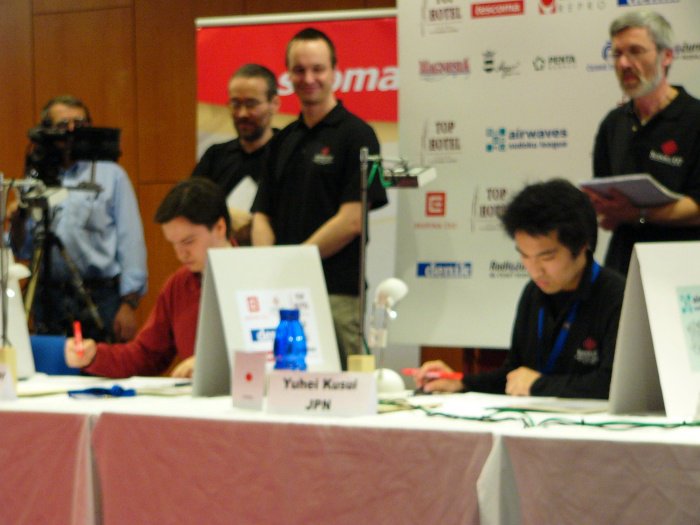 Â
Â
Time.com calls him a Sudoku Olympian. Finishing second last year, Thomas Synder (pictured left, blog, puzzles by) brought home the 2007 Sudoku World Championship from Prague, Czech Republic. This is all the more remarkable an accomplishment considering he was the only top 10 finisher from last year to make it through a tough field into this year’s finals. Yuhei Kusui (pictured right) from Japan finished second. Japan finished first in the team competition, which included a team from first-time participant China. The puzzles (pdf) are hard! Next year, Goa, India.
Posted in Math & Science | 24 Comments »
April 23rd, 2007

The first ever Cambridge Science Festival is on this week, with many many events, most free, all over Cambridge. Presented by the MIT Museum in collaboration with the City of Cambridge, Cambridge Public Library, Cambridge Public Schools, Harvard University, Massachusetts Institute of Technology, Museum of Science, and WGBH (see WGBH’s Science City), there are performances, exhibitions, and activities for all ages (search for them here). I wish I had the week off.
Also, last week marked the re-opening of Boston’s Children’s Museum, including the famous giant Milk Bottle, built in Taunton in 1930 as an ice cream stand, later bought by Hood and donated and moved to the museum 30 years ago. Here are some other giant milk bottles.
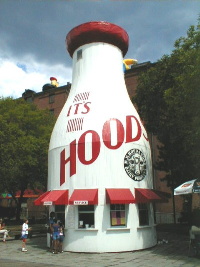
Posted in Computers & Technology, Math & Science, Music & Theater | 4 Comments »
April 10th, 2007
Born on this date in 1847 in Makó Hungary on the Romanian border (a stone’s throw from Vallaj, where my dad was born), the son of a wealthy grain merchant of Jewish origin (like my paternal grandfather) and a German mother who was a devout Roman Catholic, young Joseph Pulitzer always dreamt (like many Hungarian boys of yore who were weaned on the children’s fantasy Hári János doc) of being a soldier. After not qualifying for the Austrio-Hungarian Army nor the French Foreign Legion, he fulfilled his dream by coming to America and joining the Union Army in 1864.
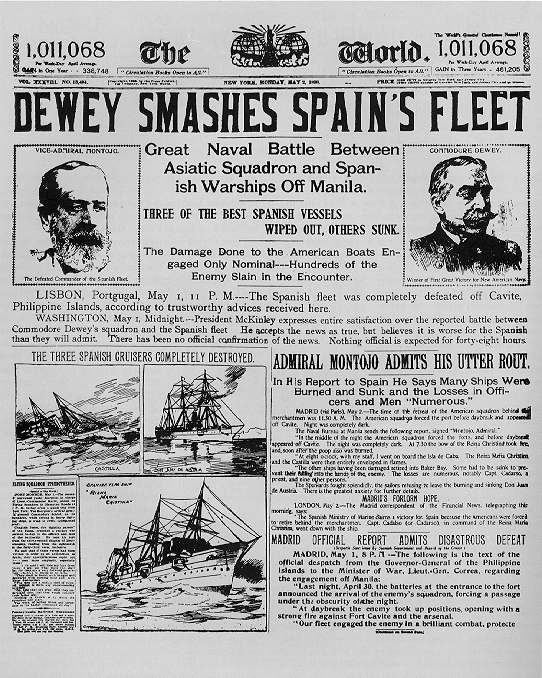
In 1872 he bought his first newspaper for $3000. He became famous after he bought New York’s World, transforming newspaper journalism with pictures, cartoons, and a liberal editorial ethic. He fought against the Spanish American war, a war bought and paid for by rival “yellow journalist” William Randolf Hearst.
 Â Â Â Â
    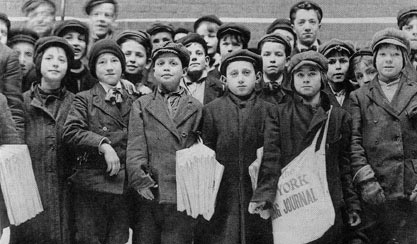
He survived the “newsie’s” strike of 1899. Newspapers were distributed by young orphans and homeless children for a meager 10 cents per hundred – and they would have to eat the cost of unsold papers! This is all commemorated in the Disney musical mega-flop Newsies.
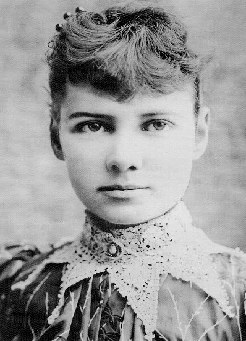
We all know about his endowment ($500,000) for journalism and literature prizes. He also happened to mentor the entire field of journalism serving in the public interest. He mentored Nellie Bly, who’s expose, Ten Days in a Mad House, was groundbreaking firsthand journalism. We can thank Pulitzer for Pulizer prize winning editorial cartoons, such as the following by Mike Luckovich. You may not be able to pick up a Pulitzer, but you can enter the 2007 Scientific Integrity Editorial Cartoon contest, or Science Idol – but hurry, the deadline is May 22nd.
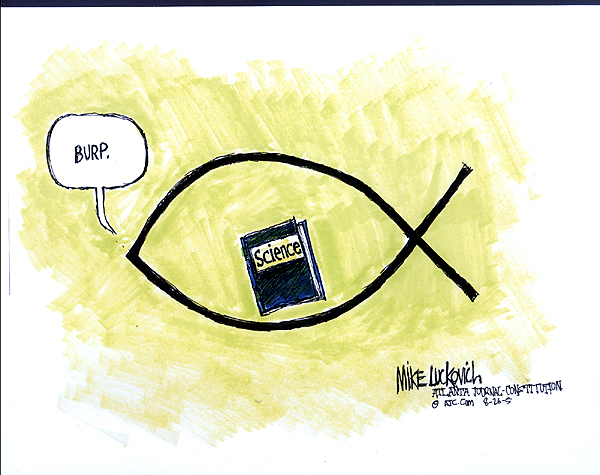 Â Â Â Â
    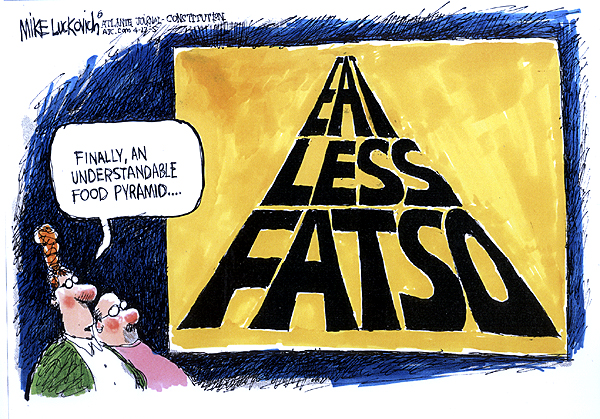    Â
    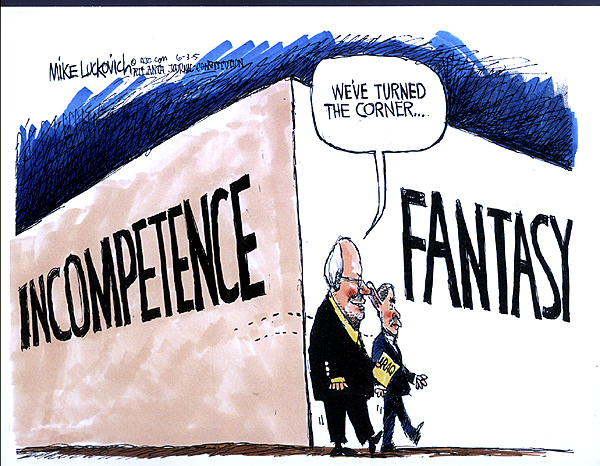
Posted in Cartoons, Politics | 973 Comments »
March 15th, 2007
 Â Â Â Â
    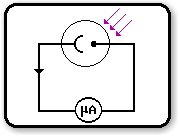    Â
    
On Pi Day, 1879 Albert Einstein was born. In 1921 he won the Nobel Prize in Physics, primarily for his pioneering work (pdf) completed March 17, 1905 explaining the photoelectric effect - a couple of months before he wrote about Special Relativity during his Annus Mirabilis. Coincidentally, 2 other Nobel Prize winners were born within a month of Einstein: Otto Hahn, the father of nuclear chemistry, and Owen Willans Richardson, who also studied the photoelectric effect and explained the sea of electrons in metals. In 1905 Einstein wrote:
According to the assumption considered here, when a light ray starting from a point is propagated, the energy is not continuously distributed over an ever increasing volume, but it consists of a finite number of energy quanta, localised in space, which move without being divided and which can be absorbed or emitted only as a whole.
In 7th grade I won a first prize in the Bronx county Science Fair with a project called How Does a Photelectric Cell Convert Light Energy into Electrical Energy. The setup was a photocell connected in series to a microammeter and a standard light source aka a candle. I spoke to the particle nature of light, but what I measured was the inverse square law for light. I had the help of a neighbor, who was a physicist, in designing the experiment. The funny part is I thought my experiment was too simple to be any good. I envied the nuclear battleship model, and other such elaborate things. In 7th grade I knew nothing about Einstein’s Nobel Prize, or the elegance of physics.
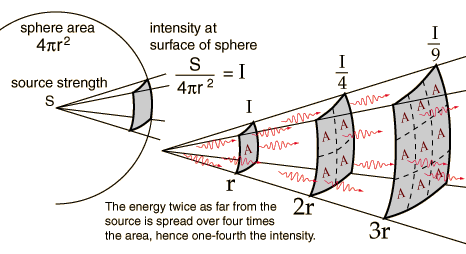
Today, in what is described as an experimental masterwork, French physicists claim to be able to trap a single photon in an “Einstein box.”

Incidentally, Einstein got an average performance review in 1905.
Posted in Books, Math & Science | 721 Comments »
February 12th, 2007
 Â
Â
The Inaugural Edition of the first and only Carnival of Mathematics has been published at Abstract Nonsense, and my entry on spigot algorithms is in it! Most of the comments are about a probability “paradox” with similarities to the Monty Hall problem. But my favorite entry tells a famous John Von Neumann story (note, the Magyar stamp leaves out the Von).
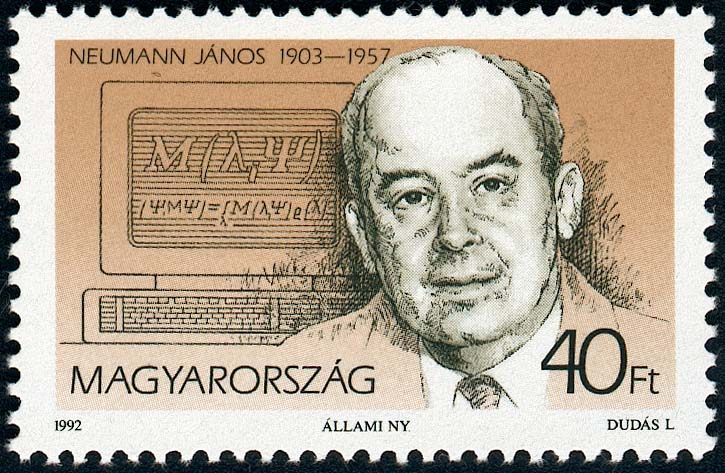
Posted in Math & Science | 5 Comments »




















